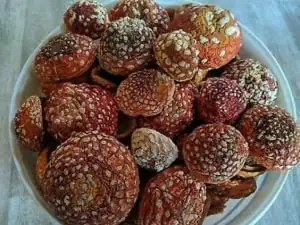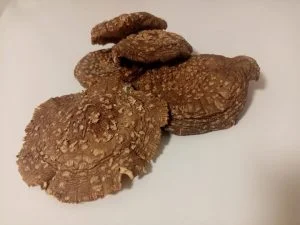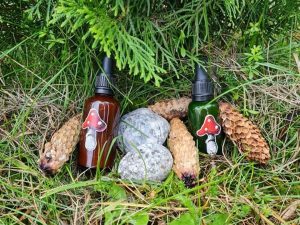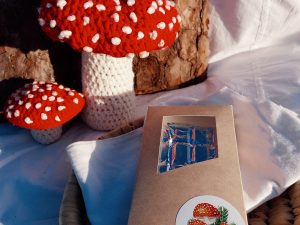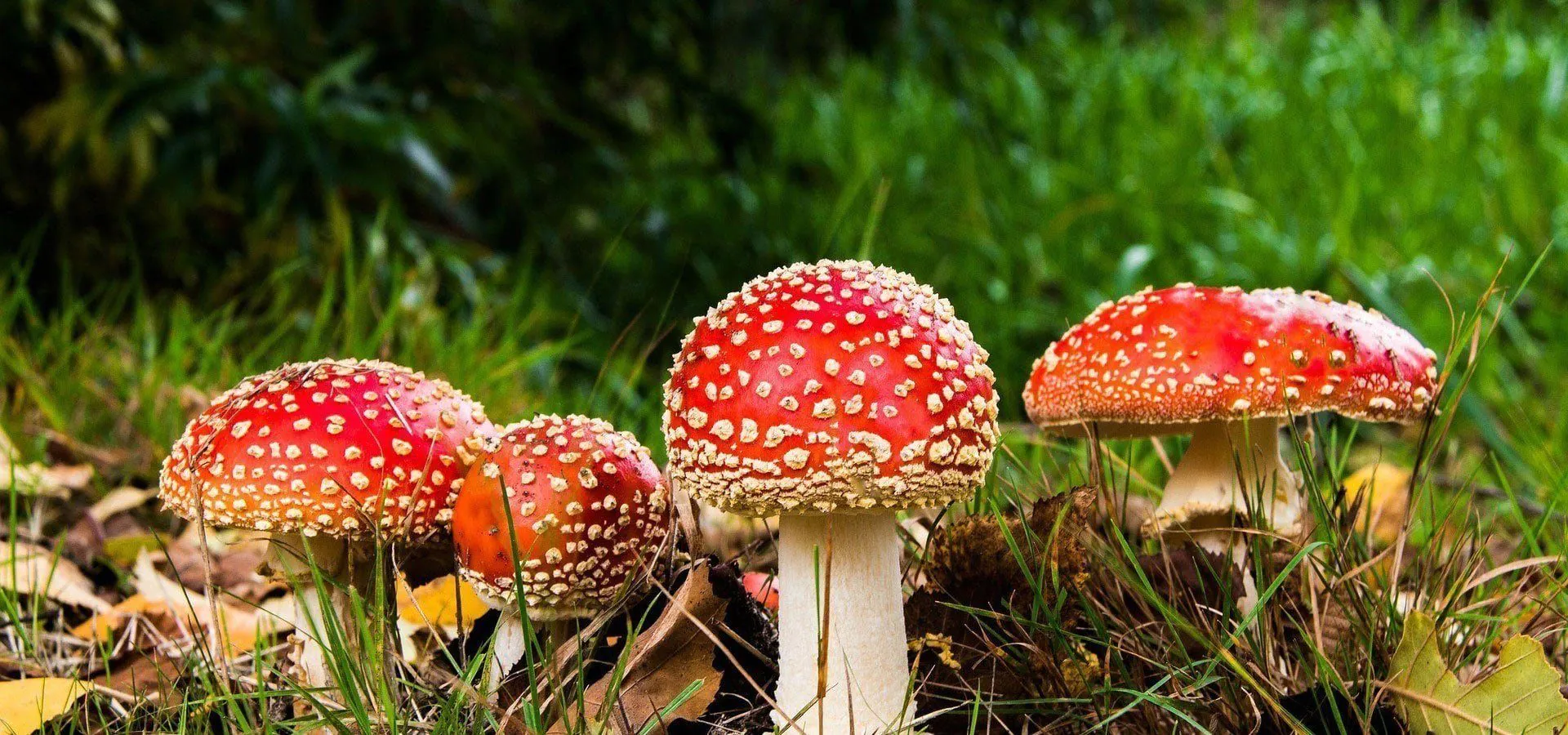
Buy Amanita Muscaria (Fly Agaric) For Sale
-
-9%
Dried Amanita Muscaria mushrooms 1 ounce (30 grams)
Rated 5.00 out of 532.99 €Original price was: 32.99 €.30.00 €Current price is: 30.00 €. Dried Amanita Muscaria mushrooms 3.5 oz ( 100grams)
Rated 5.00 out of 580.00 €Dried Amanita Pantherina Mushroom
Rated 5.00 out of 515.00 € – 420.00 €Dried Amanita Muscaria powder 100 gram
Rated 5.00 out of 570.00 €-
-11%
Dried Amanita Muscaria mushrooms 1kg (2.2lbs)
Rated 5.00 out of 5560.00 €Original price was: 560.00 €.500.00 €Current price is: 500.00 €. Fly agaric/Amanita Muscaria Tincture
Rated 5.00 out of 525.00 € – 30.00 €-
Sale!
Amanita Muscaria Gummies – Raspberry Flavor
15.00 € – 100.00 € -
Sale!
Amanita Pantherina Gummies – Blueberry Flavor
Rated 5.00 out of 515.00 € – 150.00 € Amanita muscaria chocolate | fly agaric bar 12000 mg
30.00 €
Lion’s Mane (100 gram)
28.00 €Blue lotus (100 gram)
50.00 €Chaga Mushroom (250 grams)
30.00 €Amanita muscaria chocolate | fly agaric bar 12000 mg
30.00 €-
Sale!
Amanita Pantherina Gummies – Blueberry Flavor
Rated 5.00 out of 515.00 € – 150.00 € -
Sale!
Amanita Muscaria Gummies – Raspberry Flavor
15.00 € – 100.00 € Fly agaric/Amanita Muscaria Tincture
Rated 5.00 out of 525.00 € – 30.00 €-
-11%
Dried Amanita Muscaria mushrooms 1kg (2.2lbs)
Rated 5.00 out of 5560.00 €Original price was: 560.00 €.500.00 €Current price is: 500.00 €. Dried Amanita Muscaria powder 100 gram
Rated 5.00 out of 570.00 €Dried Amanita Pantherina Mushroom
Rated 5.00 out of 515.00 € – 420.00 €Dried Amanita Muscaria mushrooms 3.5 oz ( 100grams)
Rated 5.00 out of 580.00 €-
-9%
Dried Amanita Muscaria mushrooms 1 ounce (30 grams)
Rated 5.00 out of 532.99 €Original price was: 32.99 €.30.00 €Current price is: 30.00 €.
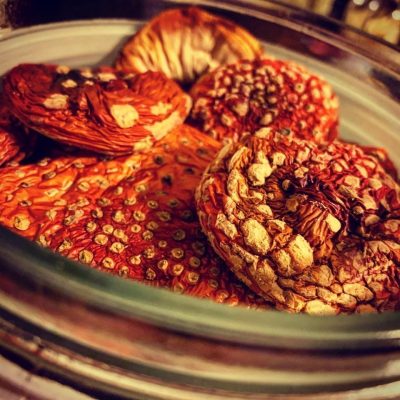
What we do
Assembling and planning Amanita Muscaria (Fly Agaric) mushroom requests a ton of information and experience. Even the smallest contrast in shading can prompt other mushroom species that might be fatal harmful – We are talented mushroom specialists conveying the best grade dried Amanita Muscaria tops in the market. Amanita muscaria has alot of history behind it returning to antiquated agnostic and viking times..
Who we are
We are one-of-a-kind mushroom experts from Lithuania. We take our craft seriously, so that the world can experience the best Amanita muscaria available.
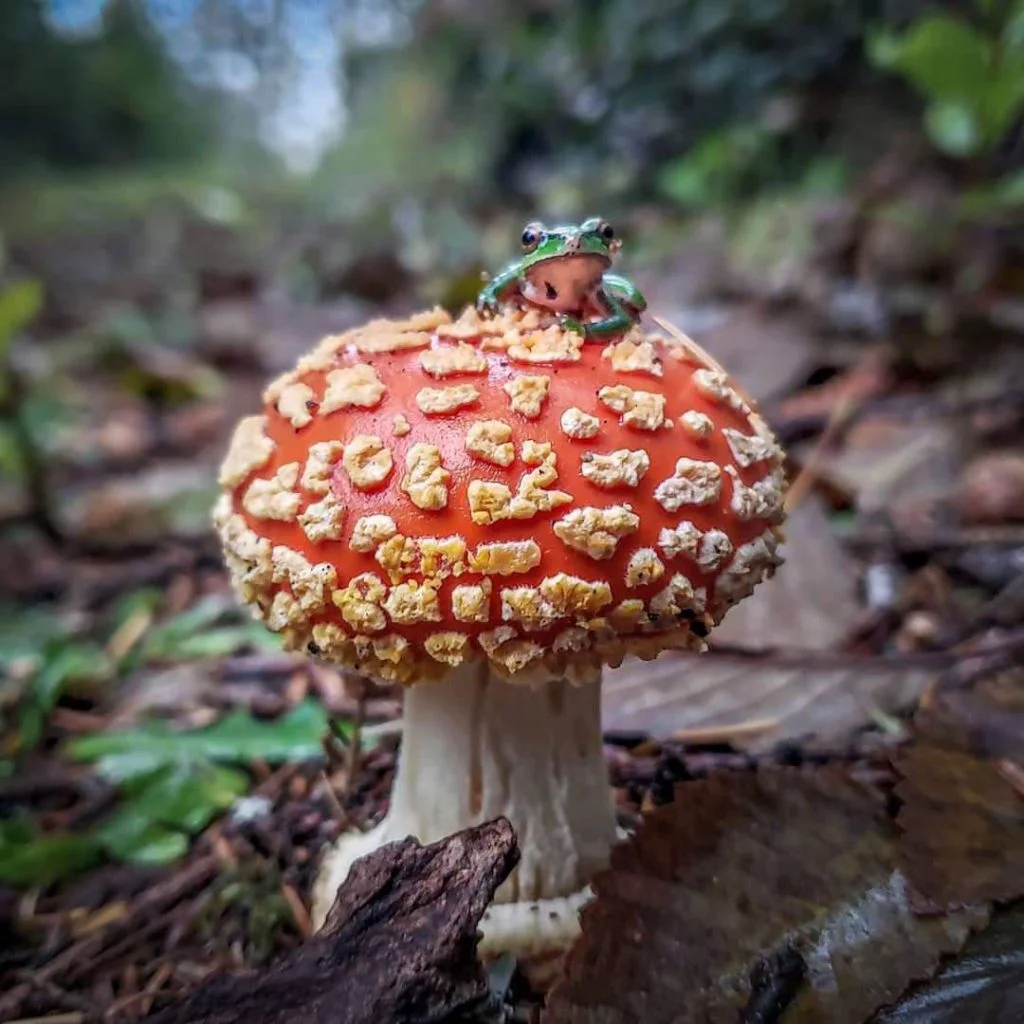
Top Quality Products
We have satisfied customers all around the world!
Free Worldwide Delivery
International Registered Priority shipping with Tracking number for orders starting at 40€
Secure Checkout
100% Protected By Paypal
DISCLAIMER
The primary active chemicals known in Amanita Muscaria are: Muscimol, Ibotenic acid, Muscazone, and Muscarine.
PRODUCTS FOUND ON THIS WEBSITE ARE NOT INTENDED FOR HUMAN CONSUMPTION. WE DO NOT PROMOTE TO EAT THEM AND WE WITHDRAW OURSELVES FROM ANY RESPONSIBILITY.


 Christopher Rimmeletop service, top quality, highest recommendation!
Christopher Rimmeletop service, top quality, highest recommendation! Acalpox - QuitIch muss erhrlich sein, als ich die Zahlung abgeschlossen hatte und die BestätigungsMail erhielt war ich echt skeptisch und beunruhigt über einen potentiellen Betrug. Kann sein, dass es an meinen vergangenen Erfahrungen lag und deswegen allgemein schnell paranoid werde und anfange in gewisse Dinge etwas hineinzuinterpretieren, aber es gab einige Details dir mir Grund zur Sorge gaben. Da waren einmal die anderen Bewertungen über den Store, einige davon waren dermaßen schwungvoll hochlobend und auffällig ausformuliert, dass ich dachte so stark kann sich der Ladenbesitzer wirklich nur selbst in den A*sch kriechen, durch Fake-Bewertungen. Andererseits gab es auch diese mit nur einem Stern, welche direkt vor Betrug und schlechter Qualität warnten. Das nächste war dann der schnelle und zuverlässige Service, wie er mehrfach in den Rezensionen erwähnt wurde. Von diesem habe ich nichts gemerkt (also nicht sofort) Ich fragte nach der TrackingNummer einmal die EmailAdresse, die die BestätigungsMail schickte und als von dieser nichts kam auch einmal die "offizielle" info @ Adresse, welche auch in der Bestätigung erwähnt wurde, dort kam nach 1-2 Tagen warten auch nichts. Dann ergriff ich den nächsten Schritt, den angegebenen WhatsApp-Account zu kontaktieren, auch dieser antwortete nicht am selben Tag. Am nächste hab ich angerufen und sogar jemand erwischt, man sagte mir, dass man es checkt und mal nachhakt, es klang für mich eher abweisend, wie jemand der einfach schnell fertig werden will. Danach kam immernoch keine Antwort, als ich dann nochmal am selben Tag auf WhatsApp nachhakte kam die TrackingNummer endlich. Um nochmal zur BestätigungsMail selbst zu kommen, diese war mir so verdächtig weil einfach nur die StandartDaten enthalten waren und diese eine Email-Adresse und wirklich nicht mehr, normalerweise ist es ja üblich, dass direkt noch ein Name oder Ansprechpartner, eine Adresse und oder eine Telefon/FaxNummer dabei steht, aber da war reingarnichts. Ebenso der WhatsAppAccoutn selbst; das Profilbild war der Verkäufer selbst, einfach nur im Auto sitzend, was grundsätzlich nicht falsch ist, aber wenn man mit so einem Account ein gutes Geschäft betreiben will, dann könnte man das meines Erachtens viel besser machen, in dem man zum Beispiel, statt des eigenen Gesichts das Logo des Geschäfts einfügt. Und auch das Feld für den Status war immernoch vom uralten standart-spruch "Hi im using whatsapp" gefüllt, wo ich mir denke da könnte man doch wenigsten etwas reinschreiben, was auf den Laden hinweist, wie "amanitamuscariastore.com die besten Fliegenpilze" oder sowas in der Art von mir aus auch nur die WebAdresse "amanitamuscariastore.com". Aber kein gutes Profilbild oder Status...Das könnte man viiiiiel besser hinkriegen mit mehr Herz, ich mein stellt man sich vor man würde ein eigenen Geschäft haben, dann ist das doch das ein und alles, es wäre mein Baby. Was natürlich auch in Profilbild und Status unerlässlich wäre zu bemerken, (zumindest wenn es der angegebene FirmenAccount ist!!) Nun das Ende vom Lied ist, dass durch Zuspruch des Verkäufers ich realtiv zuversichtlich war und letztenendes heute meine 100g Fliegenpilz und 15g PantherPilz erhalten habe. Zur Qualität kann ich nur eingeschränkt was sagen, weil ich sie noch nicht probiert habe. Aber es riecht beides sehr gut, so wie mein eigener Fliegenpilz, den ich vor einem Jahr bei mir hier in Deutschland gesammelt habe. Ich bin gespannt auf die Wirkung "von da oben" und werde eine weitere Rezension darüber verfassen.
Acalpox - QuitIch muss erhrlich sein, als ich die Zahlung abgeschlossen hatte und die BestätigungsMail erhielt war ich echt skeptisch und beunruhigt über einen potentiellen Betrug. Kann sein, dass es an meinen vergangenen Erfahrungen lag und deswegen allgemein schnell paranoid werde und anfange in gewisse Dinge etwas hineinzuinterpretieren, aber es gab einige Details dir mir Grund zur Sorge gaben. Da waren einmal die anderen Bewertungen über den Store, einige davon waren dermaßen schwungvoll hochlobend und auffällig ausformuliert, dass ich dachte so stark kann sich der Ladenbesitzer wirklich nur selbst in den A*sch kriechen, durch Fake-Bewertungen. Andererseits gab es auch diese mit nur einem Stern, welche direkt vor Betrug und schlechter Qualität warnten. Das nächste war dann der schnelle und zuverlässige Service, wie er mehrfach in den Rezensionen erwähnt wurde. Von diesem habe ich nichts gemerkt (also nicht sofort) Ich fragte nach der TrackingNummer einmal die EmailAdresse, die die BestätigungsMail schickte und als von dieser nichts kam auch einmal die "offizielle" info @ Adresse, welche auch in der Bestätigung erwähnt wurde, dort kam nach 1-2 Tagen warten auch nichts. Dann ergriff ich den nächsten Schritt, den angegebenen WhatsApp-Account zu kontaktieren, auch dieser antwortete nicht am selben Tag. Am nächste hab ich angerufen und sogar jemand erwischt, man sagte mir, dass man es checkt und mal nachhakt, es klang für mich eher abweisend, wie jemand der einfach schnell fertig werden will. Danach kam immernoch keine Antwort, als ich dann nochmal am selben Tag auf WhatsApp nachhakte kam die TrackingNummer endlich. Um nochmal zur BestätigungsMail selbst zu kommen, diese war mir so verdächtig weil einfach nur die StandartDaten enthalten waren und diese eine Email-Adresse und wirklich nicht mehr, normalerweise ist es ja üblich, dass direkt noch ein Name oder Ansprechpartner, eine Adresse und oder eine Telefon/FaxNummer dabei steht, aber da war reingarnichts. Ebenso der WhatsAppAccoutn selbst; das Profilbild war der Verkäufer selbst, einfach nur im Auto sitzend, was grundsätzlich nicht falsch ist, aber wenn man mit so einem Account ein gutes Geschäft betreiben will, dann könnte man das meines Erachtens viel besser machen, in dem man zum Beispiel, statt des eigenen Gesichts das Logo des Geschäfts einfügt. Und auch das Feld für den Status war immernoch vom uralten standart-spruch "Hi im using whatsapp" gefüllt, wo ich mir denke da könnte man doch wenigsten etwas reinschreiben, was auf den Laden hinweist, wie "amanitamuscariastore.com die besten Fliegenpilze" oder sowas in der Art von mir aus auch nur die WebAdresse "amanitamuscariastore.com". Aber kein gutes Profilbild oder Status...Das könnte man viiiiiel besser hinkriegen mit mehr Herz, ich mein stellt man sich vor man würde ein eigenen Geschäft haben, dann ist das doch das ein und alles, es wäre mein Baby. Was natürlich auch in Profilbild und Status unerlässlich wäre zu bemerken, (zumindest wenn es der angegebene FirmenAccount ist!!) Nun das Ende vom Lied ist, dass durch Zuspruch des Verkäufers ich realtiv zuversichtlich war und letztenendes heute meine 100g Fliegenpilz und 15g PantherPilz erhalten habe. Zur Qualität kann ich nur eingeschränkt was sagen, weil ich sie noch nicht probiert habe. Aber es riecht beides sehr gut, so wie mein eigener Fliegenpilz, den ich vor einem Jahr bei mir hier in Deutschland gesammelt habe. Ich bin gespannt auf die Wirkung "von da oben" und werde eine weitere Rezension darüber verfassen. AntonBerlevHello! I ordered mushrooms on this site! . Great product! Thank you!
AntonBerlevHello! I ordered mushrooms on this site! . Great product! Thank you! Of The SidheI love this Amanita Store and I am loyal customer. I found this store by myself and was a bit nervous in case I got stung but was delighted. Reasonably priced and a good product. I’m in Facebook groups which always have vendor lists (of the admins) and so overpriced so I’m happy I took a chance and found a quality and fair supplier.
Of The SidheI love this Amanita Store and I am loyal customer. I found this store by myself and was a bit nervous in case I got stung but was delighted. Reasonably priced and a good product. I’m in Facebook groups which always have vendor lists (of the admins) and so overpriced so I’m happy I took a chance and found a quality and fair supplier. Patrick BetschartThe package arrived after 2 weeks in switzerland. Fast custumersevice
Patrick BetschartThe package arrived after 2 weeks in switzerland. Fast custumersevice Tom YoungGreat product and customer service, I have made 2 orders and will definitely order again in the future!
Tom YoungGreat product and customer service, I have made 2 orders and will definitely order again in the future! Dennis BarrackI was very pleased with the personal communications and assistance I received from the team across the pond. The product delivered was properly packed and of excellent quality. I plan to be a regular customer.
Dennis BarrackI was very pleased with the personal communications and assistance I received from the team across the pond. The product delivered was properly packed and of excellent quality. I plan to be a regular customer. Igor KorolkovDiesen Jungs kann man vertrauen. Das Paket kam zwei Wochen lang an. Aber sie haben mein Jammern ertragen und mich moralisch unterstützt.)
Igor KorolkovDiesen Jungs kann man vertrauen. Das Paket kam zwei Wochen lang an. Aber sie haben mein Jammern ertragen und mich moralisch unterstützt.) jose valverdeExcellent online shop!
jose valverdeExcellent online shop! MartinI'm very happy with both the the quality of the mushrooms and the packaging. Shipment only took a week and they answered all my questions promptly before I ordered.Load more
MartinI'm very happy with both the the quality of the mushrooms and the packaging. Shipment only took a week and they answered all my questions promptly before I ordered.Load more
What is amanita muscaria?
Amanita muscaria, commonly known as the fly agaric or fly amanita, is a species of mushroom found in many parts of the world. It is perhaps most famous for its distinctive appearance: a bright red cap with white spots, which has made it a frequent subject in folklore and fairy tales. Despite its enchanting look, Amanita muscaria is known for its psychoactive properties, primarily due to the presence of compounds such as ibotenic acid and muscimol.
Historically, Amanita muscaria has been used in various cultural and religious contexts for its hallucinogenic effects. It has been speculated to play a role in Siberian shamanic traditions, where it was used to induce altered states of consciousness for spiritual journeys. The mushroom’s psychoactive effects include alterations in perception, mood, and thought, often accompanied by visual and auditory hallucinations.
It’s important to note that Amanita muscaria is also toxic. Consumption of the mushroom can lead to a range of effects, from mild nausea and dizziness to more severe neurological and gastrointestinal symptoms. The toxicity can vary widely depending on the amount consumed, the specific mushroom, and the individual’s sensitivity.
In modern times, Amanita muscaria continues to fascinate mycologists, ethnobotanists, and psychedelic enthusiasts. However, its use is cautioned against due to the unpredictable nature of its effects and the potential for poisoning. Research and interest in the mushroom often focus on understanding its cultural significance, pharmacology, and potential therapeutic applications within controlled settings.
Where does amanita muscaria grow?
Amanita muscaria, the iconic fly agaric mushroom, is renowned for its broad geographic distribution, thriving in various climates and regions across the globe. This mushroom primarily grows in symbiosis with the roots of certain trees, forming mycorrhizal relationships that are beneficial for both the fungi and their host trees. Here are the key areas where Amanita muscaria can be found:
- Northern Hemisphere: It is most commonly found in the temperate and boreal regions of the Northern Hemisphere. This includes much of Europe, North America (particularly in the United States and Canada), and northern Asia. In these regions, Amanita muscaria grows in forests where it forms associations with a variety of trees, including pines, spruces, firs, and birches.
- Southern Hemisphere: Although less common in the Southern Hemisphere, Amanita muscaria has been introduced and naturalized in some parts of the southern world, including parts of South America (such as Chile and Argentina), Australia, and New Zealand. In these regions, it often associates with introduced tree species, including various types of pine and eucalyptus, in plantations and gardens.
- Habitat: Amanita muscaria prefers moist, well-drained soils in forested areas. It is often found in mixed woodlands and conifer forests, where it forms mycorrhizal associations with the roots of trees. These symbiotic relationships are crucial for the nutrient exchange between the mushroom and its host tree, facilitating the growth and health of both organisms.
The widespread distribution of Amanita muscaria is a testament to its adaptability and the extensive range of tree species with which it can form symbiotic relationships. Its presence in a variety of climates and ecosystems underscores the ecological importance of mycorrhizal fungi in supporting forest health and biodiversity.
Why buy from AmanitaMuscariaStore.com?
Our Commitment to Quality:
- Organically Grown: Sourced from pristine, untouched forests, our Amanita Muscaria is organically grown, ensuring you receive nature’s best, free from harmful chemicals.
- Third-Party Tested: Safety and potency are our top priorities. All our products undergo rigorous third-party testing to guarantee purity and consistency.
- Sustainability: We are committed to eco-friendly practices, from sustainable harvesting to biodegradable packaging, protecting our planet for future generations.
Are there different types of Amanita muscaria?
Yes, Amanita muscaria has several subspecies and variations, displaying caps that may be yellow or white in addition to the classic red. While traditionally grouped under the term “fly agaric,” recent DNA research has identified some of these variations as distinct species, such as A. persicina.
Is Amanita muscaria edible?
While Amanita muscaria is poisonous, it has been consumed historically in certain cultures after specific preparation methods, such as parboiling with water drainage, to reduce its toxicity. It is known for its hallucinogenic properties, primarily due to compounds like muscimol and ibotenic acid.
What is the cultural significance of Amanita muscaria?
Amanita muscaria is one of the most iconic mushrooms in popular culture, appearing in video games, television shows, and folklore. Its distinctive appearance has made it a symbol in various media, contributing to its recognition and fascination worldwide.
How is Amanita muscaria classified scientifically?
Amanita muscaria is the type species of the genus Amanita and falls within the Amanita subgenus and section. This classification is based on its morphological characteristics and confirmed by molecular phylogenetic studies, which have also suggested the existence of a species complex within what is commonly referred to as Amanita muscaria.
Can Amanita muscaria be mistaken for other mushrooms?
Yes, due to its variable appearance, Amanita muscaria can be confused with other yellow to red mushrooms. However, its white-spotted red cap, white gills, and specific associations with certain trees help distinguish it from other species. Caution is advised when identifying mushrooms in the wild.
Are there any controversies surrounding Amanita muscaria?
The classification and identification of Amanita muscaria and its varieties have been subjects of debate among mycologists. Molecular studies have shown a significant genetic diversity within the species, suggesting that what is commonly identified as Amanita muscaria may actually encompass several distinct species and varieties.
How does Amanita muscaria affect insects?
Amanita muscaria contains compounds that attract and can be toxic to insects. Historically, it was believed that these properties made the mushroom effective as a natural insecticide, though the exact mechanism and effectiveness have varied in different studies and anecdotes.




